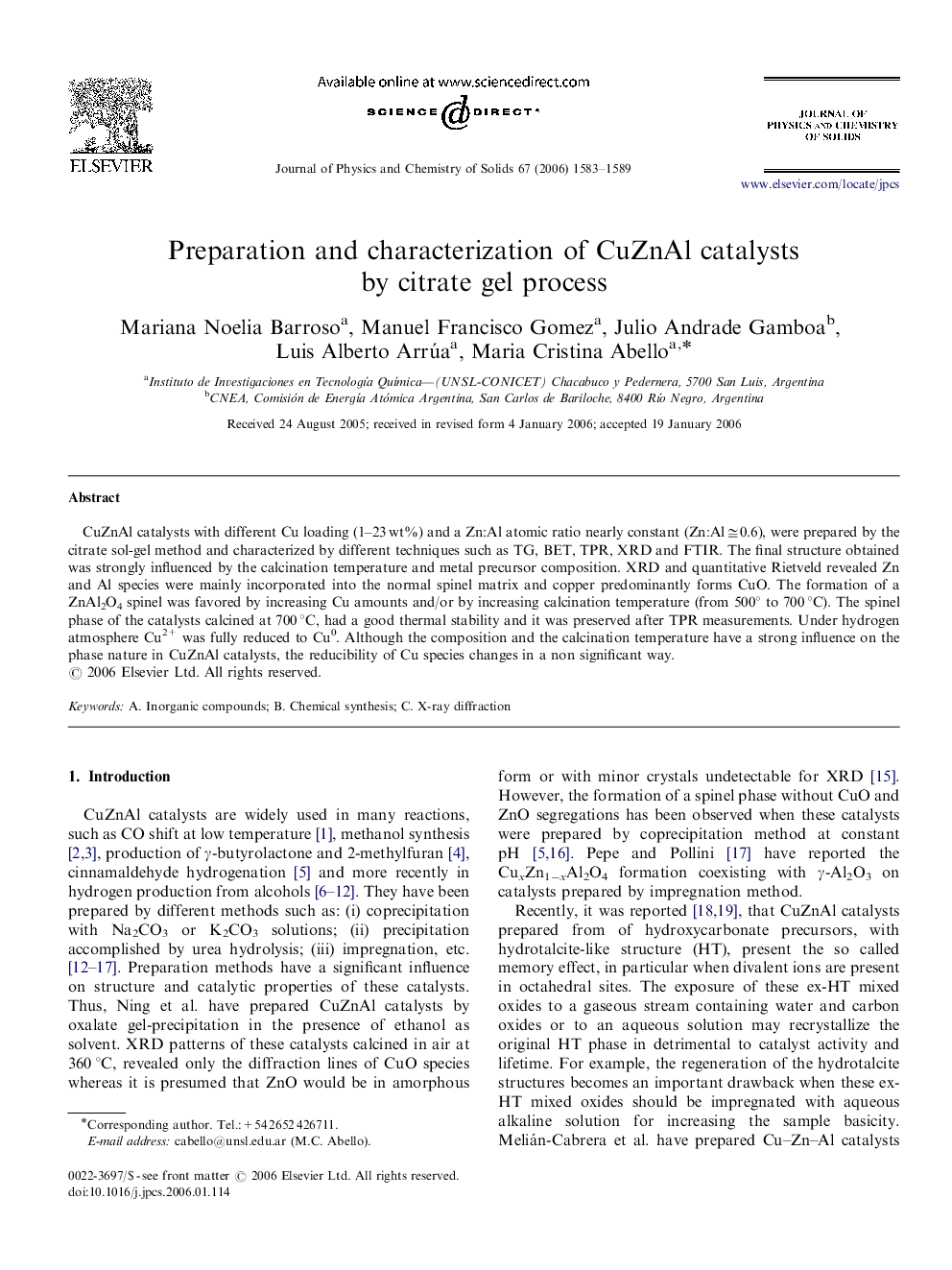| Article ID | Journal | Published Year | Pages | File Type |
|---|---|---|---|---|
| 1518830 | Journal of Physics and Chemistry of Solids | 2006 | 7 Pages |
Abstract
CuZnAl catalysts with different Cu loading (1-23Â wt%) and a Zn:Al atomic ratio nearly constant (Zn:Alâ
0.6), were prepared by the citrate sol-gel method and characterized by different techniques such as TG, BET, TPR, XRD and FTIR. The final structure obtained was strongly influenced by the calcination temperature and metal precursor composition. XRD and quantitative Rietveld revealed Zn and Al species were mainly incorporated into the normal spinel matrix and copper predominantly forms CuO. The formation of a ZnAl2O4 spinel was favored by increasing Cu amounts and/or by increasing calcination temperature (from 500° to 700 °C). The spinel phase of the catalysts calcined at 700 °C, had a good thermal stability and it was preserved after TPR measurements. Under hydrogen atmosphere Cu2+ was fully reduced to Cu0. Although the composition and the calcination temperature have a strong influence on the phase nature in CuZnAl catalysts, the reducibility of Cu species changes in a non significant way.
Related Topics
Physical Sciences and Engineering
Materials Science
Electronic, Optical and Magnetic Materials
Authors
Mariana Noelia Barroso, Manuel Francisco Gomez, Julio Andrade Gamboa, Luis Alberto Arrúa, Maria Cristina Abello,
